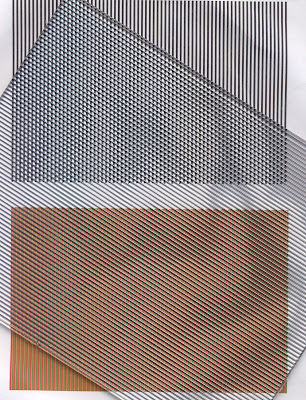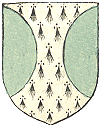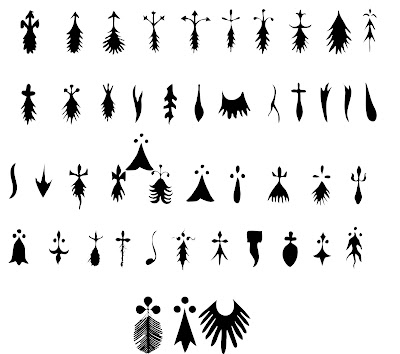Wednesday 31 March 2010
lord partoute
key that secures entrance everywhere
Synonyms: professional, master key, master copy, schoolmaster, original, passkey, maestro, superior, victor, master, overlord, passe-partout, sea captain, headmaster, captain, lord, skipper
Tuesday 30 March 2010
Monday 29 March 2010
sale of a great messuage
Robert Peake leased a house on Snow Hill at Holborn Conduit from the Saddlers' Company, whence he published a number of books.
LR 15/134
Indenture of sale between (1) William Freeman, citizen and saddler of London, and (2) John Payne of Inner Temple, London, gent: of property in St Sepulchre, London.
For £500, sale of a great messuage or inn 'Sign of the Saracens Head' [Saracen's Head] in Snowhill [Snow Hill] in St Sepulchres Newgate [St Sepulchre], London, and 5 tenements in Cock Lane adjoining, and all other tenements, etc, belonging thereto.
Tag. Signature: John Payne.
Covering dates 1646 Aug 1
churchwarden
1605 Howe records the gift of Robert Peake, goldsmith, to St Seplulchre church of a communion table ‘all richly gilded over and round about, as well below as above both tressels and footpace and at every upper corner imbost with silver plate.
footpace = a raised platform
THE Priest kneels on the footpace--quite clear of the altar; the Deacon kneels on his step, below the Priest to the right of the latter, the Subdeacon to the Priest's left, on the step below that of the Deacon. The Clerk (who cannot be seen in this plate) kneels in his usual place, facing north. The Taperers stand, one on each side of the entrance to the Choir, guarding (as it were) the approach to the altar. They take up this position during the singing of the Preface (see D. C., p. 37).
Hence he reached the church without observation, and the door being only latched he entered. The hay-trusser deposited his basket by the font, went up the nave till he reached the altar-rails, and opening the gate entered the sacrarium, where he seemed to feel a sense of the strangeness for a moment; then he knelt upon the footpace. Dropping his head upon the clamped book which lay on the Communion-table, he said aloud--
"I, Michael Henchard, on this morning of the sixteenth of September, do take an oath before God here in this solemn place that I will avoid all strong liquors for the space of twenty-one years to come, being a year for every year that I have lived. And this I swear upon the book before me; and may I be strook dumb, blind, and helpless, if I break this my oath!"
'Cecil Papers: Miscellaneous 1605', Calendar of the Cecil Papers in Hatfield House, Volume 17: 1605 (1938), pp. 570-649. URL: http://www.british-history.ac.uk/report.aspx?compid=112256&strquery=peake sepulchre Date accessed: 14 March 2010. >
The alderman's deputy, common council, churchwardens and ancient inhabitants of St. Sepulchre's without Newgate, [London], to the Same. [? 1605].It has lately pleased the King to advance Dr. Androwes, Dean of Westminster, to the bishopric of Chichester, by means whereof a residencer's place in St. Paul's is now void and in his Majesty's gift. They pray that the same may be bestowed upon Dr. Spenser, vicar of the said parish, whose living is very small and insufficient to maintain his family, having charge of 20,000 souls within that great and spacious parish.—Undated. Signed: Ralphe Garfielde deputy; John Matingley, George Pedlar, James Hodgson, Olyver Easton, Ralphe Smyth, Jhon Webster, William Porter, Hennery Callaway, John Odway, Nychollas Robert, Willam Larkine, William Baigley and Thomas Cornish; Henry Bowlind, Thomas Dennis, Robart Peake and John Lowe, churchwardens. 1 p. (197. 88.)
Sunday 28 March 2010
dusty evolution
Saturday 27 March 2010
Thursday 25 March 2010
cue dot
Most cue marks appear as either a black circle (if the physical hole is punched out on the negative used to make the projection print of the film), or a white circle (if the mark is made by punching a hole or scraping the emulsion on the film).
lenticular

Pushed to their margins even obsolete media become sensitive enough to register the signs and clues of a situation. Then, as in the case of the sectional plane of two optical media, patterns and moires emerge; myths, fictions of science, oracles…
Kittler GFT XL Preface
Wednesday 24 March 2010
hurt/bruise

3 August, 12 James I [A.D. 1614].
John Wells of Golding Lane, vintner, Edward Pidgeon of the same, —, and Arthur Gillgate of Fleet Street, gentleman, for the said John for hurting and bruising Elizabeth Peake.
Sess. Roll 533/96.
tracing the body
 This word Fesse is a French word, and doth signifie the Loines of a man. This Ordinary hath beene anciently taken for the same that wee call Baltheum militare, or Cingulum honoris, a Belt of honours: because it divideth the Field into two equall parts, it self occupying the middle between both; even as the Girdle environeth the middle part of a man, and resteth upon his Loines.
This word Fesse is a French word, and doth signifie the Loines of a man. This Ordinary hath beene anciently taken for the same that wee call Baltheum militare, or Cingulum honoris, a Belt of honours: because it divideth the Field into two equall parts, it self occupying the middle between both; even as the Girdle environeth the middle part of a man, and resteth upon his Loines. Hitherto of a Barre: Now of a Gyronne: A Gyronne is an Ordinarie consisting of two straight lines drawen from divers parts of the Escocheon, and meeting in an Acute-Angle in the Fesse Point of the same. A Gyronne (as one saith) is the same that we call in Latine Gremium, which signifieth a Lappe, and is the space betweene the thighes: and thence perchance doe we call the Groyne; which name, whether it be given to this charge because it determines in gremio, in the very lappe or midst of the Escocheon, or because it hath a bending like the thigh and legge together, I cannot define. Gyrons are borne diversly, viz. single, by couples, of six, of eight, of ten, and of twelve, as shall appeare heereafter, where I shall speake of Armes having no tincture predominating. For the making this Ordinarie, behold this next Escocheon, where you shall finde one single Gyronne alone, which doth best expresse the maner thereof, as in example.
Hitherto of a Barre: Now of a Gyronne: A Gyronne is an Ordinarie consisting of two straight lines drawen from divers parts of the Escocheon, and meeting in an Acute-Angle in the Fesse Point of the same. A Gyronne (as one saith) is the same that we call in Latine Gremium, which signifieth a Lappe, and is the space betweene the thighes: and thence perchance doe we call the Groyne; which name, whether it be given to this charge because it determines in gremio, in the very lappe or midst of the Escocheon, or because it hath a bending like the thigh and legge together, I cannot define. Gyrons are borne diversly, viz. single, by couples, of six, of eight, of ten, and of twelve, as shall appeare heereafter, where I shall speake of Armes having no tincture predominating. For the making this Ordinarie, behold this next Escocheon, where you shall finde one single Gyronne alone, which doth best expresse the maner thereof, as in example. This word Flanch (as some doe hold) is derived from the French word Flans, which signifieth the Flanke of man or beast, that includeth the small guttes, because that part strouteth out, cum tumore quodam, as if it were a blowne bladder. Sometimes you may finde this Ordinary made of some other forme of Lines then plaine, which when it shall happen, you must in the blazon thereof, make speciall mention of the forme of Line whereof it is composed.
This word Flanch (as some doe hold) is derived from the French word Flans, which signifieth the Flanke of man or beast, that includeth the small guttes, because that part strouteth out, cum tumore quodam, as if it were a blowne bladder. Sometimes you may finde this Ordinary made of some other forme of Lines then plaine, which when it shall happen, you must in the blazon thereof, make speciall mention of the forme of Line whereof it is composed.via A DISPLAY OF HERALDRIE: by John Guillim
sumptuary laws
In England, which in this respect was typical of Europe, from the reign of Edward III in the Middle Ages until well into the 17th century,[2] sumptuary laws dictated what color and type of clothing, furs, fabrics, and trims were allowed to persons of various ranks or incomes. In the case of clothing this was intended, amongst other reasons, to reduce spending on foreign textiles and to ensure that people did not dress "above their station".
Sumptuary laws have also been used to control populations by prohibiting the wearing of native dress and hairstyles, along with the proscription of other cultural customs. Sir John Perrot, Lord Deputy of Ireland under Elizabeth I, banned the wearing of traditional woollen mantles, "open smocks" with "great sleeves", and native headdresses, requiring the people to dress in "civil garments" in the English style.
Greenwich, 15 June 1574, 16 Elizabeth I
None shall wear in his apparel:
Any silk of the color of purple, cloth of gold tissued, nor fur of sables, but only the King, Queen, King's mother, children, brethren, and sisters, uncles and aunts; and except dukes, marquises, and earls, who may wear the same in doublets, jerkins, linings of cloaks, gowns, and hose; and those of the Garter, purple in mantles only.
Cloth of gold, silver, tinseled satin, silk, or cloth mixed or embroidered with any gold or silver: except all degrees above viscounts, and viscounts, barons, and other persons of like degree, in doublets, jerkins, linings of cloaks, gowns, and hose.
Woolen cloth made out of the realm, but in caps only; velvet, crimson, or scarlet; furs, black genets, lucernes; embroidery or tailor's work having gold or silver or pearl therein: except dukes, marquises, earls, and their children, viscounts, barons, and knights being companions of the Garter, or any person being of the Privy Council.
Velvet in gowns, coats, or other uttermost garments; fur of leopards; embroidery with any silk: except men of the degrees above mentioned, barons' sons, knights and gentlemen in ordinary office attendant upon her majesty's person, and such as have been employed in embassages to foreign princes.
Caps, hats, hatbands, capbands, garters, or boothose trimmed with gold or silver or pearl; silk netherstocks; enameled chains, buttons, aglets: except men of the degrees above mentioned, the gentlemen attending upon the Queen's person in her highness's Privy chamber or in the office of cupbearer, carver, sewer [server], esquire for the body, gentlemen ushers, or esquires of the stable.
Satin, damask, silk, camlet, or taffeta in gown, coat, hose, or uppermost garments; fur whereof the kind groweth not in the Queen's dominions, except foins, grey genets, and budge: except the degrees and persons above mentioned, and men that may dispend £100 by the year, and so valued in the subsidy book.
Hat, bonnet, girdle, scabbards of swords, daggers, etc.; shoes and pantofles of velvet: except the degrees and persons above names and the son and heir apparent of a knight.
Silk other than satin, damask, taffeta, camlet, in doublets; and sarcanet, camlet, or taffeta in facing of gowns and cloaks, and in coats, jackets, jerkins, coifs, purses being not of the color scarlet, crimson, or blue; fur of foins, grey genets, or other as the like groweth not in the Queen's dominions: except men of the degrees and persons above mentioned, son of a knight, or son and heir apparent of a man of 300 marks land by the year, so valued in the subsidy books, and men that may dispend £40 by the year, so valued ut supra.
None shall wear spurs, swords, rapiers, daggers, skeans, woodknives, or hangers, buckles or girdles, gilt, silvered or damasked: except knights and barons' sons, and others of higher degree or place, and gentlemen in ordinary office attendant upon the Queen's majesty's person; which gentlemen so attendant may wear all the premises saving gilt, silvered, or damasked spurs.
None shall wear in their trappings or harness of their horse any studs, buckles, or other garniture gilt, silvered, or damasked; nor stirrups gilt, silvered, or damasked; nor any velvet in saddles or horse trappers: except the persons next before mentioned and others of higher degree, and gentlemen in ordinary, ut supra.
Note that the Lord Chancellor, Treasurer, President of the council, Privy Seal, may wear any velvet, satin, or other silks except purple, and furs black except black genets.
These may wear as they have heretofore used, viz. any of the King's council, justices of either bench, Barons of the Exchequer, Master of the Rolls, sergeants at law, Masters of the Chancery, of the Queen's council, apprentices of law, physicians of the King, queen, and Prince, mayors and other head officers of any towns corporate, Barons of the Five Ports, except velvet, damask, [or] satin of the color crimson, violet, purple, blue.
Note that her majesty's meaning is not, by this order, to forbid in any person the wearing of silk buttons, the facing of coats, cloaks, hats and caps, for comeliness only, with taffeta, velvet, or other silk, as is commonly used.
Note also that the meaning of this order is not to prohibit a servant from wearing any cognizance of his master, or henchmen, heralds, pursuivants at arms; runners at jousts, tourneys, or such martial feats, and such as wear apparel given them by the Queen, and such as shall have license from the Queen for the same.
the fabulous life and times of ...

Did those who sipped brandy in the William and Mary Room find themselves stirred more by the 1590 painting of Sir Thomas Crompton or by being able to stare at themselves in the superb pair of mirrors in their gilt-gesso frames… Isadore Barmash
Benjamin Sonnenberg, the press agent extraordinaire who single-handedly invented the notion of corporate image-making and in the process made a fortune. He was an Edwardian-style bon vivant and an astute art and antiques collector. His 37-room Gramercy Park house, with its paneled rooms and fine 18th-century furniture, reflected his Anglophilia, as well as a passion for brass and clocks.
Tuesday 23 March 2010
horridly trick'd
'Tis not so; it begins with Pyrrhus:
'The rugged Pyrrhus, he whose sable arms,
Black as his purpose, did the night resemble
When he lay couched in the ominous horse,
Hath now this dread and black complexion smear'd
With heraldry more dismal. Head to foot
Now is be total gules, horridly trick'd
With blood of fathers, mothers, daughters, sons,
Bak'd and impasted with the parching streets,
That lend a tyrannous and a damned light
To their lord's murther. Roasted in wrath and fire,
And thus o'ersized with coagulate gore,
With eyes like carbuncles, the hellish Pyrrhus
Old grandsire Priam seeks.'
So, proceed you.
Hamlet, II.2.
true lover's knot
lacan's quilting point Point de capiton
insulating tape, passe partout, copper 2010
The lover's knot is entwined in the iconography of Elizabethan portraiture: an ideological portraiture which invents the subject emblazoned with its patrimony, inlaid with emblematic capital and cryptic over-connections The depicted knot appears as one thread complexly interwoven, but I found by following the drawing on the sleeve of Sir Henry Lee that in fact it can only be made with two threads. Loosely woven they present a geometrical balance, when tightened, they strangle one another.
semé

513 The progresses 11
Then followed she in a black velvet gown seemé of crosletts or quatrefoiles sylver, and a small white feather on her head, accompanied with ladies.

semé (sə mā′) sow, scatter
adjective
Heraldry having a design of many small figures; dotted, as with stars
Etymology: Fr, orig. pp. of semer, to sow, L seminare, semen, a seed.


Monday 22 March 2010
Sunday 21 March 2010
FRACTURED NARRATIVES? IDENTITY CONFUSIONS? SURVEILLANCE ANXIETIES? DISJOINTED PERSPECTIVES?
 in HIM, a glimmering light of the Golden times appeare, all lines of expectation met in this Center, all spirits of vertue, scattered into others were extracted into him
in HIM, a glimmering light of the Golden times appeare, all lines of expectation met in this Center, all spirits of vertue, scattered into others were extracted into him “We princes are set on stages in the sight
and view of all the world duly observed”
“Her visible being was a hieroglyphic of the timeless corporate being with its absolute perfection…She was a living representation pf the immutable within time, a fiction of permanence. Through her, society achieved symbolic immortality and acted out a myth of a perfect stable world, a world which replaces the flux of history”(Greenblatt, 1980, p. 167)
Urban 17th Century Jacobean dramaturgy is renowned for its metafictional play with artifice and the fragmented points-of-view of its desperate self-fashioning dramatis personae.
“The message is that there are no ‘knowns’. There are things we know that we know. These are known unknowns. That is to say there are things that we now know that we don’t know. But there are also unknown unknowns. There are things we don’t know we don’t know”. (Donald Rumsfeld, The Guardian, 9. Nov. 2006, p. 3) via












